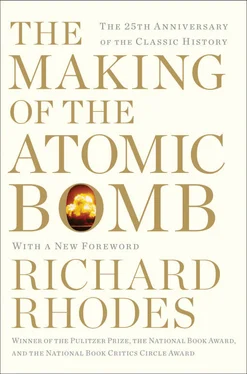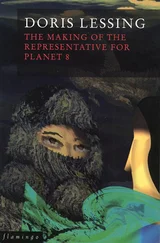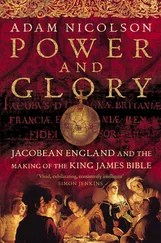Von Neumann too wondered about the mystery of his and his compatriots’ origins. His friend and biographer, the Polish mathematician Stanislaw Ulam, remembers their discussions of the primitive rural foothills on both sides of the Carpathians, encompassing parts of Hungary, Czechoslovakia and Poland, populated thickly with impoverished Orthodox villages. “Johnny used to say that all the famous Jewish scientists, artists and writers who emigrated from Hungary around the time of the first World War came, either directly or indirectly, from those little Carpathian communities, moving up to Budapest as their material conditions improved.” 394Progress, to people of such successful transition, could be a metaphysical faith. “As a boy,” writes Teller, “I enjoyed science fiction. I read Jules Verne. His words carried me into an exciting world. The possibilities of man’s improvement seemed unlimited. The achievements of science were fantastic, and they were good.” 395
Leo Szilard, long before he encountered the novels of H. G. Wells, found another visionary student of the human past and future to admire. Szilard thought in maturity that his “addiction to the truth” and his “predilection for ‘Saving the World’” were traceable first of all to the stories his mother told him. 396But apart from those, he said, “the most serious influence on my life came from a book which I read when I was ten years old. It was a Hungarian classic, taught in the schools, The Tragedy of Man.”
A long dramatic poem in which Adam, Eve and Lucifer are central characters, The Tragedy of Man was written by an idealistic but disillusioned young Hungarian nobleman named Imre Madach in the years after the failed Hungarian Revolution of 1848. A modern critic calls the work “the most dangerously pessimistic poem of the 19th century.” 397It runs Adam through history with Lucifer as his guide, rather as the spirits of Christmas lead Ebenezer Scrooge, enrolling Adam successively as such real historical personages as Pharaoh, Miltiades, the knight Tancred, Kepler. Its pessimism resides in its dramatic strategy. Lucifer demonstrates to Adam the pointlessness of man’s faith in progress by staging not imaginary experiences, as in Faust or Peer Gynt, but real historical events. Pharaoh frees his slaves and they revile him for leaving them without a dominating god; Miltiades returns from Marathon and is attacked by a murderous crowd of citizens his enemies have bribed; Kepler sells horoscopes to bejewel his faithless wife. Adam sensibly concludes that man will never achieve his ultimate ideals but ought to struggle toward them anyway, a conclusion that Szilard continued to endorse as late as 1945. “In [Madach’s] book,” he said then, “the devil shows Adam the history of mankind, [ending] with the sun dying down. 398Only a few Eskimos are left and they worry chiefly because there are too many Eskimos and too few seals [the last scene before Adam returns to the beginning again]. The thought is that there remains a rather narrow margin of hope after you have made your prophecy and it is pessimistic.”
Szilard’s qualified faith in progress and his liberal political values ultimately set him apart from his Hungarian peers. He believed that group was shaped by the special environment of Budapest at the turn of the century, “a society where economic security was taken for granted,” as a historian paraphrases him, and “a high value was placed on intellectual achievement.” 399The Minta that Szilard and Teller later attended deeply gratified von Kármán when he went there in the peaceful 1890s. “My father [who founded the school],” he writes, “was a great believer in teaching everything—Latin, math, and history—by showing its connection with everyday living.” To begin Latin the students wandered the city copying down inscriptions from statues and museums; to begin mathematics they looked up figures for Hungary’s wheat production and made tables and drew graphs. “At no time did we memorize rules from a book. Instead we sought to develop them ourselves.” 400What better basic training for a scientist?
Eugene Wigner, small and trim, whose father managed a tannery and who would become one of the leading theoretical physicists of the twentieth century, entered the Lutheran Gimnásium in 1913; John von Neumann followed the next year. “We had two years of physics courses, the last two years,” Wigner remembers. “And it was very interesting. Our teachers were just enormously good, but the mathematics teacher was fantastic. He gave private classes to Johnny von Neumann. He gave him private classes because he realized that this would be a great mathematician.” 401
Von Neumann found a friend in Wigner. They walked and talked mathematics. Wigner’s mathematical talent was exceptional, but he felt less than first-rate beside the prodigious banker’s son. Von Neumann’s brilliance impressed colleagues throughout his life. Teller recalls a truncated syllogism someone proposed to the effect that (a) Johnny can prove anything and (b) anything Johnny proves is correct. 402At Princeton, where in 1933 von Neumann at twenty-nine became the youngest member of the newly established Institute for Advanced Study, the saying gained currency that the Hungarian mathematician was indeed a demigod but that he had made a thorough, detailed study of human beings and could imitate them perfectly. 403The story hints at a certain manipulative coldness behind the mask of bonhomie von Neumann learned to wear, and even Wigner thought his friendships lacked intimacy. 404To Wigner he was nevertheless the only authentic genius of the lot. 405
These earlier memories of Gimnásium days contrast sharply with the turmoil that Teller experienced. Part of the difference was personal. Teller was bored in first-year math at the Minta and quickly managed to insult his mathematics teacher, who was also the principal of the school, by improving on a proof. The principal took the classroom display unkindly. “So you are a genius, Teller? Well, I don’t like geniuses.” 406But whatever Teller’s personal difficulties, he was also confronted directly, as a schoolboy of only eleven years, with revolution and counterrevolution, with riots and violent bloodletting, with personal fear. What had been usually only implicit for the Martians who preceded him was made explicit before his eyes. “I think this was the first time I was deeply impressed by my father,” he told his biographers. “He said anti-Semitism was coming. To me, the idea of anti-Semitism was new, and the fact that my father was so serious about it impressed me.” 407
Von Kármán studied mechanical engineering at the University of Budapest before moving on to Göttingen in 1906; de Hevesy tried Budapest in 1903 before going to the Technische Hochschule in Berlin in 1904 and on to work with Fritz Haber and then with Ernest Rutherford; Szilard had studied at the Technology Institute in Budapest and served in the Army before the post-Armistice turmoil made him decide to leave. In contrast, Wigner, von Neumann and particularly Teller experienced the breakdown of Hungarian society as adolescents—Teller at the impressionable beginning of puberty—and at first hand.
“The Revolution arrived as a hurricane,” an eyewitness to the Hungarian Revolution of October 1918 recalls. “No one prepared it and no one arranged it; it broke out by its own irresistible momentum.” 408But there were antecedents: a general strike of half a million workers in Budapest and other Hungarian industrial centers in January 1918; another general strike of similar magnitude in June. In the autumn of that year masses of soldiers, students and workers gathered in Budapest. This first brief revolution began with anti-military and nationalistic claims. By the time the Hungarian National Council had been formed under Count Mihály Károli (“We can’t even manage a revolution without a count,” they joked in Budapest), in late October, there was expectation of real democratic reform: the council issued a manifesto calling for Hungarian independence, an end to the war, freedom of the press, a secret ballot and even female suffrage.
Читать дальше












